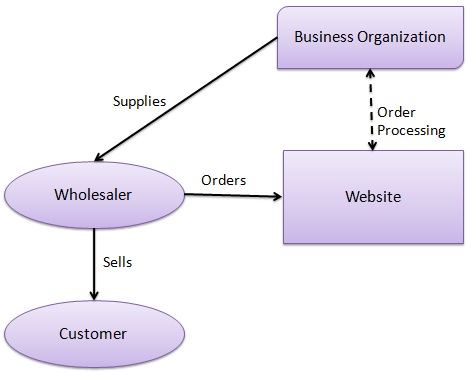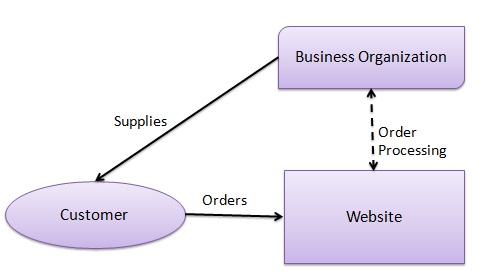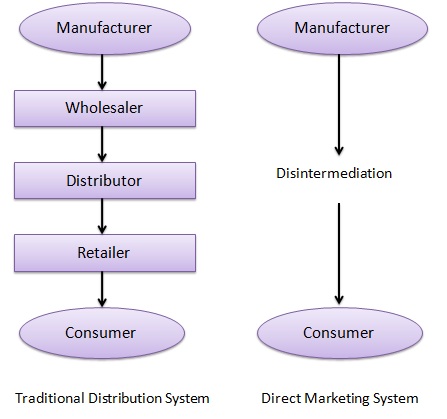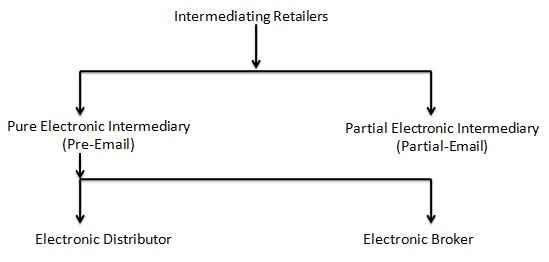Theoretical Paper
- Computer Organization
- Data Structure
- Digital Electronics
- Object Oriented Programming
- Discrete Mathematics
- Graph Theory
- Operating Systems
- Software Engineering
- Computer Graphics
- Database Management System
- Operation Research
- Computer Networking
- Image Processing
- Internet Technologies
- Micro Processor
- E-Commerce & ERP
Practical Paper
Industrial Training
B2b, B2C
B2b
Website following B2B business model sells its product to an intermediate buyer who then sells the product to the final customer. As an example, a wholesaler places an order from a company's website and after receiving the consignment, sells the end product to final customer who comes to buy the product at wholesaler's retail outlet.

B2B implies that seller as well as buyer is business entity. B2B covers large number of applications which enables business to form relationships with their distributors, resellers, suppliers etc. Following are the leading items in B2B e-Commerce.
- Electronics
- Shipping and Warehousing
- Motor Vehicles
- Petrochemicals
- Paper
- Office products
- Food
- Agriculture
Key technologies
Following are the key technologies used in B2B e-commerce −
Electronic Data Interchange (EDI) − EDI is an inter organizational exchange of business documents in a structured and machine processable format.
Internet − Internet represents world wide web or network of networks connecting computers across the world.
Intranet
− Intranet represents a dedicated network of computers within a single organizationExtranet − Extranet represents a network where outside business partners, supplier or customers can have limited access to a portion of enterprise intranet/network.
.
Back-End Information System Integration − Back End information systems are database management systems used to manage the business data.
Architectural Models
Following are the architectural models in B2B e-commerce −
Supplier Oriented marketplace − In this type of model, a common marketplace provided by supplier is used by both individual customers as well as business users. A supplier offers an e-stores for sales promotion.
Buyer Oriented marketplace − In this type of model, buyer has his/her own market place or e-market. He invites suppliers to bid on product's catalog. A Buyer company opens a bidding site.
Intermediary Oriented marketplace − In this type of model, an intermediary company runs a market place where business buyers and sellers can transact with each other.
B2C
In B2C model, business Website is a place where all transactions take place between a business organization and consumer directly.

In B2C Model, a consumer goes to the website, selects a catalog, orders the catalog and an email is sent to business organization. After receiving the order, goods would be dispatched to the customer. Following are the key features of a B2C Model
- Heavy advertising required to attract large no. of customers.
- High investment in terms of hardware/software.
- Support or good customer care service
Consumer Shopping Procedure
Following are the steps used in B2C e-commerce −
A consumer
- determines the requirement.
- searches available items on the website meeting the requirment.
- compares similar items for price, delivery date or any other terms.
- gives the order.
- pays the bill.
- receives the delivered item and review/inspect them.
- consults the vendor to get after service support or returns the product if not satisfied with the delivered product.
Disintermediation and Reintermediation
In traditional commerce, there are intermediating agents like wholesalers, distributors, retailers between manufacturer and consumer. In B2C website, manufacturer can sell products directly to consumers. This process of removal of business layers responsible for intermediary functions is called Disintermediation.

Now-a-days, a new electronic intermediary breed is emerging like e-mall and product selection agents are emerging. This process of shifting of business layers responsible for intermediary functions from traditional to electronic mediums is called Reintermediation.


